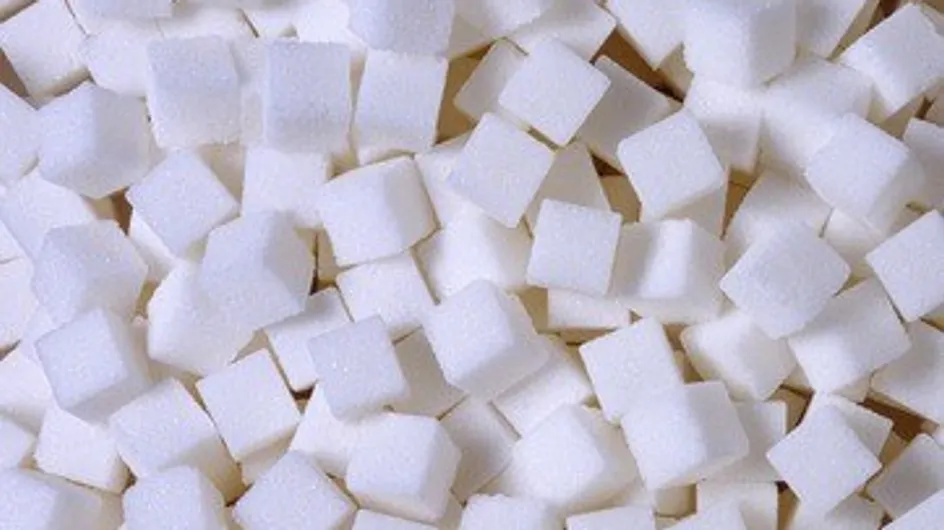Granulated sugar: refined
Refinement is a process of transformation of sugar cane and of beet. It is composed of several steps of washing, grinding, cooking, filtering, evaporation and centrifuging. The more sugar is refined, the more it loses its minerals and vitamins.
There are many types of sugar with different levels of refinement.
Whole sugar
Cane sugar that has not undergone any transformation, is not refined and retains all its original minerals and vitamins. Brown in colour with a wet look, it is very fragrant (vanilla and liquorice smelling) and powerfully sweet. It is found in organic shops and also in fair trade aisles in supermarkets. Whole sugar actually protects against tooth decay because of its vitamins and minerals!
Soft brown sugar
Refined cane sugar (95% saccharose compared to 99% for white sugar). It owes its particularities (brown colour, wet look and smell) to the 5% mineral salts and organic materials (gum and wax) it contains. Low in vitamins and minerals, it is nonetheless more fragrant (with smells of rum and vanilla) and is widely used for caramelisation and making crumble. Today, most bought brown sugar is simply coloured white sugar, sometimes with black treacle added. Make sure you buy quality brown sugar with a wet look.
White sugar
White sugar comes from beet or cane and is in both cases refined 100%. It is totally devoid of minerals and vitamins and has a neutral taste.
Icing sugar
Ground sugar reduced to a very fine powder. Whole icing sugar exists.
Vergeoise
Widely used in the North of France. Made by refining beet syrup. Very fragrant, it is used in shortcrust biscuits and to sweeten waffles, pancakes etc. It can be brown or blond, depending on the degree of cooking.
Light brown sugar
Similar to brown sugar. Made from sugar cane that has been partially refined, but a little liquorice remains giving it its blond colour and fragrance.
Rapadura
A whole sugar with a granular look (because it is pure sugar cane). This sugar is extremely sweet. Find it in organic and health shops.
Liquorice
A thick, gooey syrup which is the residue of the refinement process of sugar cane. Richer in minerals and vitamins than white sugar, it is also less calorific. Used in pastries to add a little rustic taste and colour. It can be found in organic shops.
The degree of refinement does not affect the calorie content of sugar! Whole sugar contains just as many calories as white sugar (400 calories per 100g). However, its sweetness is so strong that we use less of it.
Natural sugar
Comes straight from Mother Nature and does not undergo any form of transformation. Contains minerals and vitamins and has a sweetening power stronger than white sugar.
Honey: produced by bees from flowers, there are many different sorts with different tastes (lavender, rosemary, fir, chestnut etc.) that have been made since ancient times. It has many medicinal properties. Don't heat it; this destroys the enzymes.
Maple syrup: obtained by the concentration of maple water. Its taste is very particular and fragrant. Make sure that you use good quality syrup whose nutritional properties have been preserved. Beware also of fake maple syrups that are just coloured glucose syrup.
Sugar alternatives
Several powdered and natural alternatives to sugar exist, also called artificial sweetneners.
Agave syrup
An extract of Mexican plant called the agave. High in fructose, it is sweeter than sugar and low in calories, so it is considered a natural artificial sweetener. Suitable for vegetarians and found in organic shops.
Stevia
Comes from a South American plant; It's much sweeter than sugar and calorie free. However, it is hard to get the amount right and its effects on the body are still being debated.
Cereals
Rice, barley, wheat etc. Syrups are extracted during fermentation of these cereals, which produce fats naturally. Their colour and tastes differ. They are less calorific, higher in minerals and used to sweeten yoghurts and mashed fruit. However, their sweetness is weaker than sugar and they liquidify during cooking, which prevents their use in desserts.
Artificial sweeteners
They are used a lot in industrial food production. The best known is aspartame. Their sweetening power is very strong and their calorie content is modest.
What sugar to use for desserts?
Each sugar or artificial sweetener has its own characteristics. Icing sugar is ideal for meringues and cake decoration. The finesse and neutral flavour of white sugar means it can be used in all desserts, but there's nothing to stop you from using whole sugar in your desserts, as long as you reduce the quantities indicated in the recipe. The same applies if you want to cook with honey and maple syrup or add extra flavours. If you want to use artificial sweeteners, whether they are natural or not, check that you can use them for cooking (some don't stand up to heat) and that they don't leave a bitter aftertaste.














